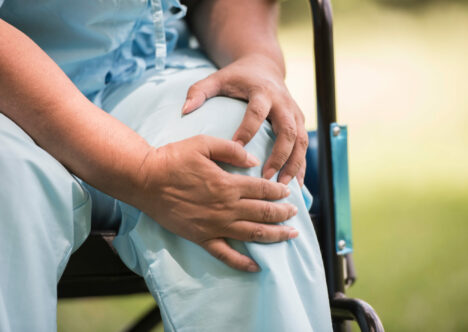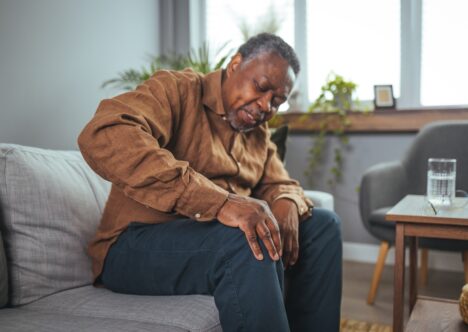Use our convenient online scheduler to book an appointment now.
Do you have pain in your hip or groin and wonder what’s causing it? It could be adult hip dysplasia. In this video, Dr. Abbas Naqvi from Town Center Orthopaedics explains what adult hip dysplasia is, its symptoms, and its most successful treatment options.
Hip dysplasia, a condition commonly associated with infants and children, is often overlooked as a potential health issue in adults. However, recent statistics reveal a significant prevalence of hip dysplasia in adults. It’s estimated that up to 10% of hip replacements performed in the U.S. each year are a result of hip dysplasia.
Unfortunately, hip dysplasia in adults is often underdiagnosed or misdiagnosed. Symptoms may be attributed to normal aging or other conditions, resulting in delayed diagnosis and treatment. In this article, we’ll answer your questions about the symptoms and treatment of adult hip dysplasia to support the importance of early detection, appropriate treatment, and better outcomes for individuals affected by this condition.
What Is Hip Dysplasia in Adults?
Adult hip dysplasia essentially means that the hip was not formed appropriately in utero. This results in a shallow socket where your hip is not fully captured. This causes an abnormal hip movement that will eventually lead to arthritis.
What Are the Key Symptoms of Hip Dysplasia in Adults?
The classic symptom that most patients complain of is pain in the groin. This may sound unusual because most patients imagine hips to be much higher. In reality, the hip is located in the groin, where most patients will feel pain, especially when they flex their leg up as if trying to touch their knee to their chest.
This condition can have a profound impact on quality of life, often causing chronic pain and mobility limitations. Patients may experience difficulty performing daily activities, such as walking, standing, and even sitting for extended periods. The pain and discomfort associated with hip dysplasia can also lead to decreased overall physical activity levels and reduced participation in recreational and social activities.
In addition, hip dysplasia can also have a psychological impact on adults. Living with chronic pain can lead to feelings of frustration, sadness, and depression. The constant pain and limitations in mobility can affect a person’s ability to work, engage in hobbies, and maintain relationships, leading to a decreased overall quality of life.
What Happens if Hip Dysplasia Isn’t Treated in Adults?
Untreated hip dysplasia in adults causes wear and tear in the hip that over time will eventually lead to the development of arthritis. Initially, that will cause pain. And if that pain progresses, doctors can try different treatments to help control it. But ultimately, untreated hip dysplasia could result in the need for surgery.
What Are Adult Hip Dysplasia Treatments?
The treatment of adult hip dysplasia depends on how far it has progressed. Essentially, treatment is divided into two categories. If caught early, before arthritis develops, it can sometimes be treated by altering the pelvis, breaking the bone to shift it around to cover the hip better.
However, if arthritis has already developed and the cartilage has worn away, there is no way to bring the cartilage back. Then, the treatment is likely going to be a total hip replacement, in which the damaged sections are replaced with two prosthetic components.
One part of the surgery replaces the socket with a metal cup that will grow into the bone. The second part is to replace the hip bone with an implant that will also grow into the bone. The two new components combined create pain-free hip movement.
How Is Developmental Dysplasia of the Hip in Adults Approached by Doctors?
Treatment is based on how far it has progressed. If a patient is in the earlier stages and their hip is pretty pristine, nonoperative treatments such as physical therapy, anti-inflammatories, or steroid injections could be considered.
However, if patients go on to develop arthritis of the hip and nonoperative treatments don’t provide enough pain relief or allow patients to do the things they enjoy, the next step would be a total hip replacement. The good news is that this surgery is outpatient well over 95% of the time. The patient is up and walking on it within an hour of coming out of the operating room, and they can usually go home the same day.
How Effective Are Lifestyle Changes in Managing Adult Hip Dysplasia?
Unfortunately, because it’s a malformation of the hip, hip dysplasia is a mechanical problem that lifestyle modifications can’t fix. However, in the earlier stages, certain lifestyle modifications can help alleviate pain. Scaling back on activities that result in a lot of jumping or flexing of the hip can provide some relief. But outside of that, very little can be done from a nonsurgical perspective to restore more normal anatomy to the hip.
What Should You Do if You Think You Have Adult Hip Dysplasia?
If you or a loved one are experiencing symptoms of hip dysplasia in adults, such as groin pain, mobility limitations, or difficulty performing daily activities, it’s important to see a hip specialist for a diagnosis and find out about treatments that could help make a difference.
Consider making an appointment with one of our Town Center Orthopaedics’ medical professionals. Our offices are conveniently located in Northern Virginia, so there’s sure to be a location nearby where we can see you and help you feel better, move better, and be better soon.
Join our Mailing List
TCO provides patients with orthopedic problems the trusted resources and patient-centered advice they need to “Feel Better. Move Better. Be Better.”
© 2024 Town Center Orthopaedics | All Rights Reserved


